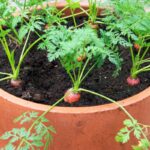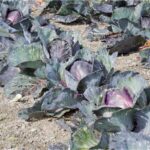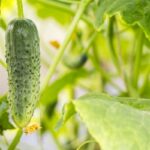As modern living spaces grow smaller and increasingly urban, traditional outdoor gardening is becoming a luxury many cannot afford.
However, a green thumb need not be restrained by the lack of outdoor space. Indoor gardening is a flourishing trend, allowing even those in high-rise buildings to cultivate their own green haven.
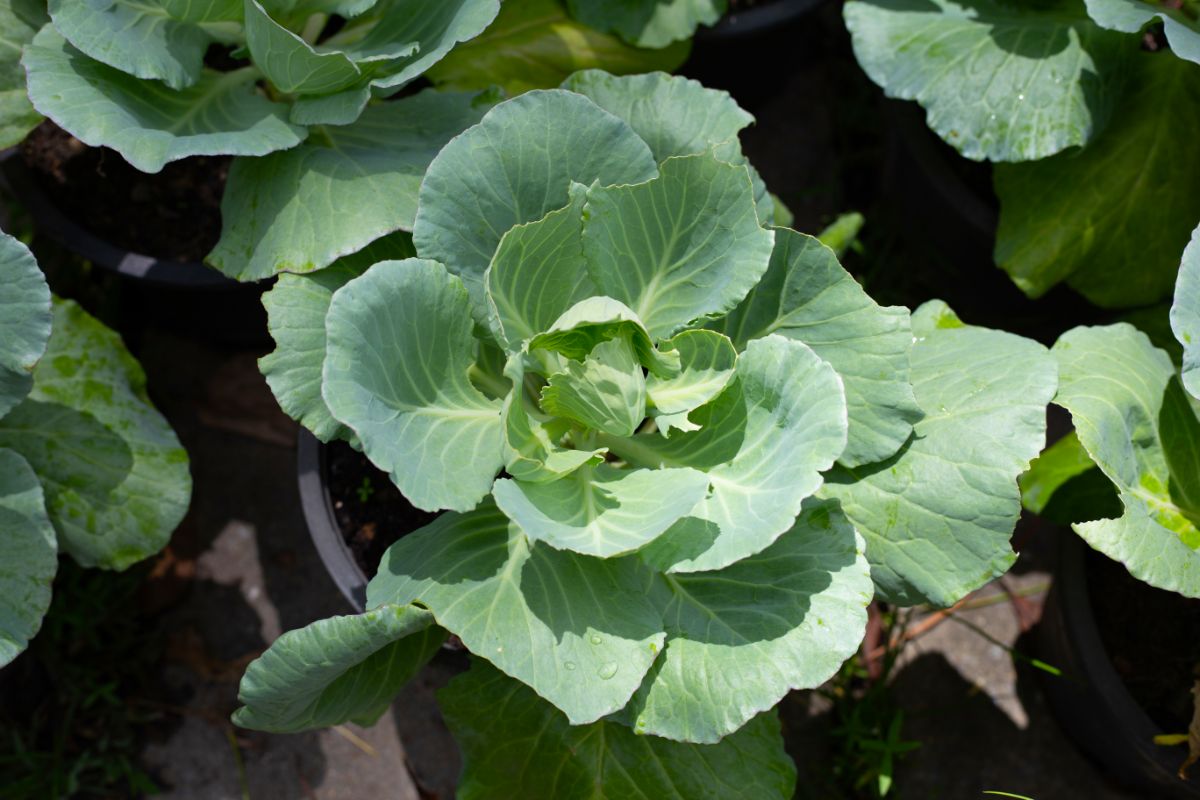
One vegetable that lends itself surprisingly well to indoor cultivation is the humble, yet highly nutritious, cabbage.
Packed with vitamins and dietary fibre, cultivating cabbage indoors promises not only an engaging hobby but also a rewarding harvest.
In this article, I will guide you through the process of indoor cabbage cultivation, from choosing the right variety to enjoying the fruits of your labour.
The Trick To Growing Cabbages Indoors
1. Understanding Cabbage Varieties
All cabbages are not created equal.
While they all belong to the Brassica family, there’s a wide array of cabbage varieties, each with their specific growth habits, sizes, and flavours.
For indoor gardening, compact or dwarf varieties are ideal. Some recommended varieties include Red Acre, Golden Acre, Copenhagen Market, and Dwarf Bok Choy. These varieties have a smaller growth habit, making them suitable for pot cultivation.
2. Starting With Seeds Or Seedlings
If you’re an eager novice or pressed for time, purchasing cabbage seedlings might be tempting. They offer a head start and usually ensure a good survival rate.
However, starting from seeds offers a deeper understanding of the plant life cycle and complete control over growing conditions, including organic cultivation.
3. Preparing For Germination
Initiating your indoor cabbage garden involves starting your seeds in a rich, organic potting mix. Seedling trays or small pots can be used for this purpose.
Plant the seeds approximately 1/2 inch deep and 2 inches apart. Following planting, water gently, ensuring the soil is moist but not waterlogged.
Place the tray in a warm location, ideally with a temperature range between 20°C and 27°C, which promotes optimal germination.
My grandad always put a clear plastic bag over his seeds to help them germinate indoors, which worked well.
4. Caring For Seedlings
Expect your cabbage seeds to sprout within five to seven days. Once the seedlings have at least two sets of true leaves, they are ready to be transplanted.
You’ll need a pot with a depth and diameter of about 12-14 inches. A good-sized pot, coupled with adequate drainage, is essential to prevent waterlogging and root rot.
5. Crafting The Ideal Potting Mix
Cabbage growth relies heavily on the quality of the soil. An ideal potting mix for cabbage should be well-draining yet moisture-retaining.
Combine equal parts compost, peat moss, and perlite for a mix that offers excellent drainage, necessary nutrients, and allows for adequate soil aeration.
Adding a slow-release organic fertiliser will provide the plants with the nutrients they need for their growth cycle.
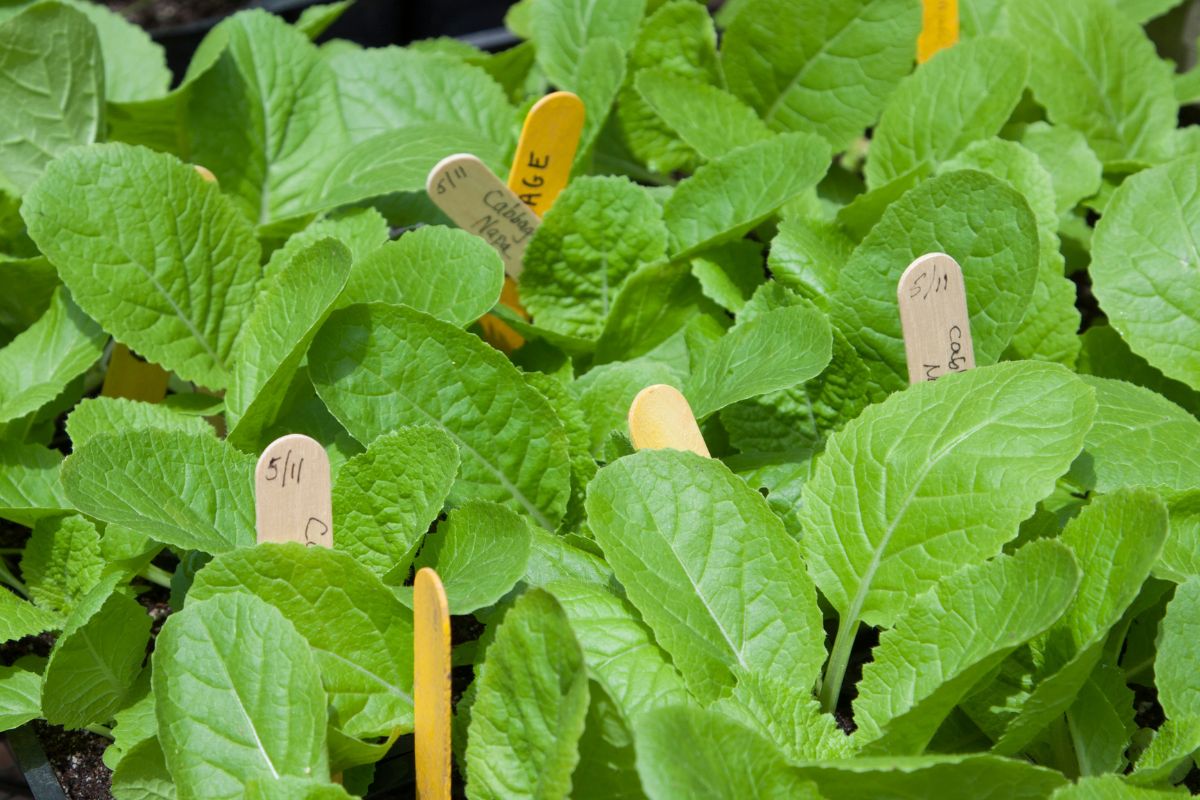
6. The Art Of Transplanting
When transplanting your cabbage seedling, handle it by the leaves, not the stem, to avoid causing any damage. The soil should cover the seedling up to the lowest set of leaves.
After transplanting, water it thoroughly to ensure good contact between the roots and the new soil.
7. Light And Temperature: Striking The Balance
The cabbage plant thrives in cooler conditions, ideally between 15°C and 20°C. However, it needs about six hours of sunlight daily. If natural light is scarce, consider using a full-spectrum grow light.
The light mimics natural sunlight, providing your plants with the necessary light spectrum for photosynthesis.
8. Regular Care And Pest Management
Cabbages are heavy feeders, requiring a nutrient-rich soil. Regular feeding with an organic vegetable fertiliser will help keep nutrient levels optimal.
Watering should allow the top inch of soil to dry out before the next watering to prevent overwatering.
While indoor cabbages are generally protected from most pests, aphids can be an issue. Use a mild soapy water solution sprayed onto the leaves for pest control.
9. The Harvest
Depending on the variety, your cabbage should be ready for harvest anywhere between 70 and 120 days.
Look for firm heads and vibrant colour as an indication of maturity. To harvest, cut the stem at the base of the head with a sharp knife, leaving the outer leaves intact.
10. Culinary Enjoyment
Once you’ve harvested your cabbage, the world of culinary delight awaits. From crunchy coleslaws to hearty soups, your homegrown cabbage can be a versatile ingredient in your kitchen. Nothing beats the satisfaction of consuming produce you’ve cultivated yourself.
Final Thoughts
Growing cabbage indoors provides an enriching gardening experience and a source of fresh, organic vegetables. It’s an exercise in patience and care, but the rewards are well worth the effort.
By following this comprehensive guide, you will be well on your way to adding cabbage to your indoor garden, regardless of the size of your living space or the outside weather conditions.
Did you know that you can grow cabbage from cabbage heads? This is another great method to adopt when growing your cabbages indoors.
- Can You Grow Bell Peppers Indoors? A Guide For New Gardeners - November 14, 2023
- Composting Basics: Can You Compost Mushrooms? - November 6, 2023
- A Gardener’s Guide To Growing Carrots In Raised Beds - November 1, 2023

